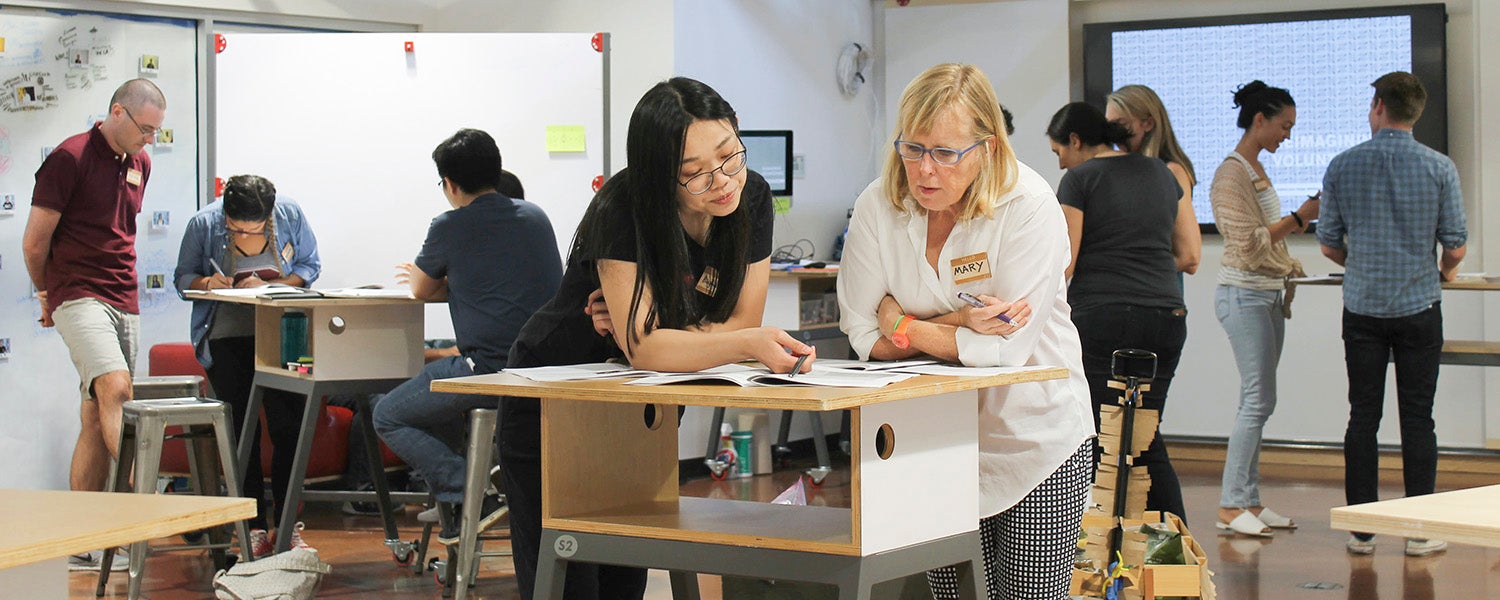Stanford graduate students explore new fields during summer institute
The Stanford Graduate Summer Institute offers immersive, interdisciplinary, accelerated courses covering an array of topics, including energy research, sustainable agriculture, international negotiation and decision-making, and the academic job search.
When the Stanford Graduate Summer Institute opens next week, participants enrolled in one of its immersive, interdisciplinary courses will visit a local high school dedicated to opening the doors to students who would be the first in their families to attend college.
The field trip is part of Making Sense of Race in the United States, which will be taught by Tomás R. Jiménez, an associate professor of sociology in the School of Humanities and Sciences. The course will feature talks by Stanford scholars about race and ethnicity.
“More than 50 years after the zenith of the civil rights movement, debates about the role of race in American democracy are as prevalent as ever,” said Jiménez, author of the 2017 book, The Other Side of Assimilation: How Immigrants Are Changing American Life.
Jiménez said the course will go “behind the headlines” to understand what race and ethnicity are and examine how they play out in important realms of life, including identity, racism, prejudice and discrimination, politics, education and incarceration.
It is one of 10 courses that will be offered during the Stanford Graduate Summer Institute, which was designed to give graduate students the opportunity to explore subjects outside their academic fields, experiment with new ideas and expand their networks within Stanford’s diverse graduate community.
The institute, which will be held Sept. 10-14, is an annual program of the Office of the Vice Provost for Graduate Education. The free, not-for-credit courses, which range in size from 14 to 125 participants, are open to current and incoming graduate students, and – if space is available – to postdoctoral scholars.
Patricia J. Gumport, vice provost for graduate education and postdoctoral affairs, said the program builds networks among graduate students and faculty across all seven schools.
“It’s truly interdisciplinary engagement,” said Gumport, who is also a professor of education in the Graduate School of Education. “The Stanford Graduate Summer Institute provides an easy way for incoming and current graduate students to acquire new skills, as well as learn about new knowledge and lines of inquiry beyond their primary academic specializations.”
This year’s courses have attracted more than 460 graduate students and postdoctoral scholars. Since Stanford launched the program in 2006, more than 3,000 graduate students and postdoctoral scholars from all seven schools have participated.
The summer institute offers courses in an array of fields, including energy research at Stanford and the SLAC National Accelerator Laboratory, international negotiation and decision-making, and design thinking, including a course taught by instructors from the Stanford Life Design Lab.
Some of the courses are targeted at specific audiences, such as Jumpstart Your Academic Job Search, which was designed for doctoral students and postdoctoral scholars who will soon enter the faculty job market.
In a new course, Identity in the Classroom, participants will explore how academic learning spaces can be designed to be more inclusive of all students, and how equitable and effective approaches to teaching can be adopted in a variety of settings.
Field trips to local farms – in Pescadero, Half Moon Bay, Paicines, Richmond and Watsonville – are also on tap for students enrolled in Local Agriculture and Sustainable Food Systems, taught by Patrick Archie, director of the O’Donohue Family Stanford Educational Farm, a project of the School of Earth, Energy and Environmental Sciences.
In the course syllabus, Archie, a lecturer in the Earth Systems Program, provided a list of suggested readings, as well as a list of suggested supplies and attire: “For the field trips, please bring a sack lunch, a water bottle, sun protection, layers (it can be hot or chilly depending on location and time of day), good walking shoes, and be prepared to get dirty!”
For more information about the Stanford Graduate Summer Institute, please contact the Office of the Vice Provost for Graduate Education (VPGE) at vpgeapplications@stanford.edu.

